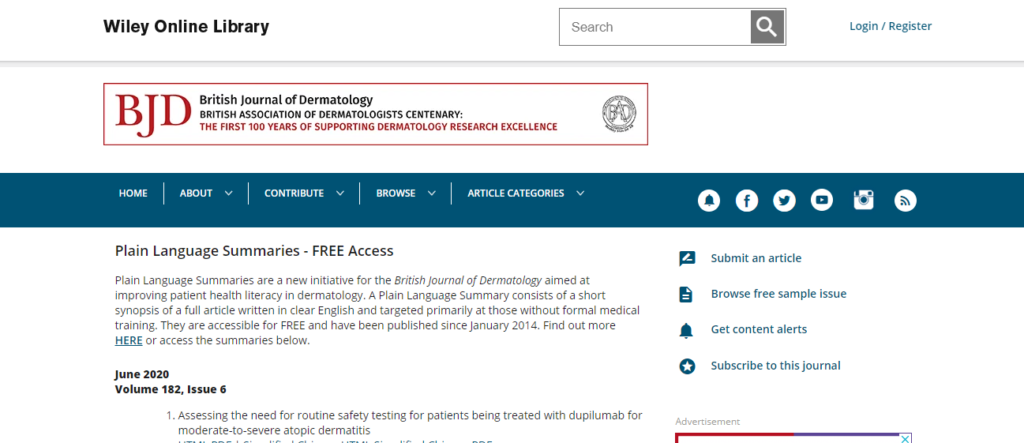News
Jun 29, 2020
Making dermatology research more accessible for patients
We are at risk of stating the completely obvious, but it’s hard to exaggerate the importance of research in medicine. It’s the foundation upon which every advance is built. Dermatology is no different, particularly as a specialty where many common conditions are ‘managed’ rather than cured. Despite this, the world of research can be challenging for patients to access and engage with.

Traditionally, for most dermatology patients, the first time that they might become aware of a new development is when it is offered to them by a healthcare professional. If they are lucky, say if it’s a particularly large breakthrough, or the condition is deemed interesting enough, they might read about new research in the newspaper.
Fortunately, this is changing, in some areas faster than others, thanks to the work of individuals and organisations – both patients and healthcare professionals. Priority setting partnerships are helping patients and researchers to come together to highlight important areas of research, patient representatives, such as the British Journal of Dermatology’s (BJD) Patient Associate Editors, are bridging the gap between researchers, scientific journals, and the public, and the proliferation of open access journals are making research more accessible than ever.
However, these issues don’t completely dispel a major problem, which is helping patients access and understand newly published research about their condition. We don’t doubt that there are patients out there who can, and do, digest highly complex research articles and understand the implications, but this complexity is a barrier to many people that we want to remove.
To this end, the BJD has, for a number of years, been producing a range of plain language research summaries. The aim is to make key dermatology research available to the general public in the form of short summaries, condensing the essential facts of a study into a few short paragraphs of simple explanation.

The feedback on this initiative has been very positive, but there remains the challenge of making them accessible to the public. If you aren’t familiar with academic publishing, then you are unlikely to access them through BJD’s website. Social media has played an important role in this, as have the various patient support groups and individuals who have supported the initiative. However, we are always looking for new ways to improve access.
To address this, teams at the BJD and the British Association of Dermatologists (BAD), have come together to develop a new section of the BAD’s Patient Hub devoted to these summaries. The Plain Language Summaries of Research page is a fully searchable database of the research summaries, which can be sorted by date or disease category. Eventually we have plans to backdate this to include every research summary we have ever produced.

There are still many steps to take to improve how dermatology research works with, and for, patients – but we hope that this is a useful part of the puzzle. In the meantime, we’d appreciate any help in getting the word out about this resource. Our recommendation for people interested in this initiative is to bookmark the page and check back monthly as new summaries are released. You may even wish to subscribe to our mailing list, and allow us to send you monthly updates on any new summaries when they become available. This can be done using this link.
It is our hope that we will continue to see innovation and collaboration which closes the gap between dermatology patients and dermatology researchers. This is part of a wider movement in the medical world which aims to engage and empower patients and shake-up the relationship between healthcare providers, and those they treat. In this regard, the future is very exciting, and we have no doubt that the benefits of these initiatives will be felt by both patients and healthcare professionals.

This article was written by James Burton and Bernd Arents (pictured above), both patient advocates and Patient Associate Editors at the British Journal of Dermatology.